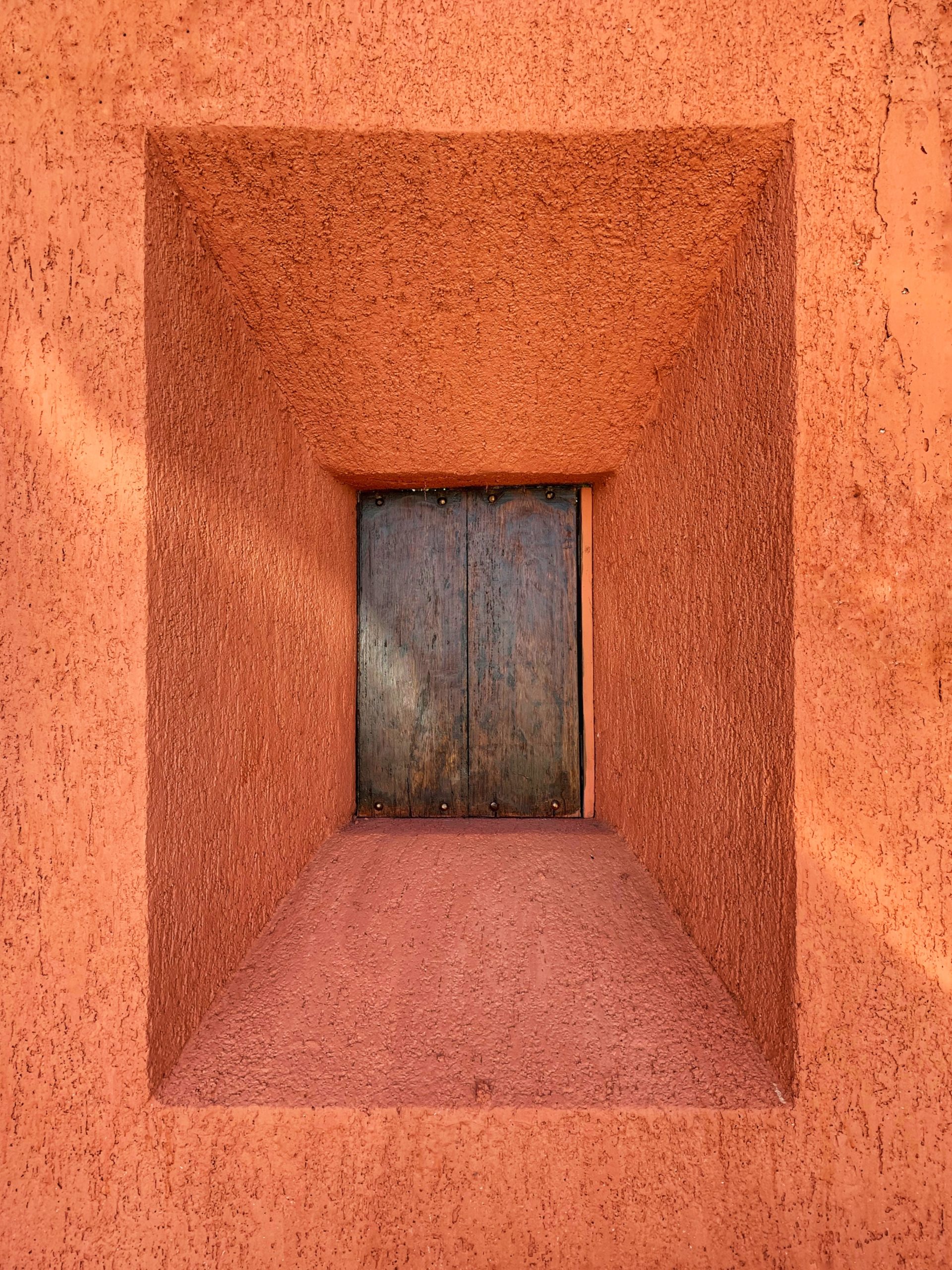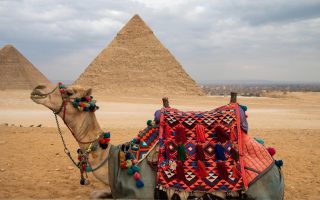“The Spotlight” brings to light the stories of Muslim women of the past and present. In this instalment, We are visiting the life of Nafisa Al Tahira, a prominent scholar of Qur’an and Hadith, an ascetic philanthropist and a teacher behind scholars.
In the last instalment, we sneaked a peek in the life of Sitt Al Wuzara, a highly respected scholar who was exceptionally talented in Islamic sciences. We talked about how the dearth of resources on the history of Muslims almost completely excludes the women and why it is our responsibility as Muslim women to document our own history. One of the comments we received on the story of Sitt Al-Wuzara was from a Muslim man who said and we quote “Wow! ONE unfamous Muslim woman VS ten billion famous Muslim men. Go figure”

This comment further reminded us about the importance of unearthing the stories of thousands of Muslim women whose histories were buried. It reinforces why we should vehemently document the stories of the women of our time. In this instalment, we extensively discuss the life of Nafisa Al-Tahira, the grand scholar behind scholars.
Nafisa bint Al-Hassan was a female descendant of the Prophet Muhammad (PBUH), a scholar and teacher of Islam. Having taught Imam Muhammad ibn Idris ash-Shafi’i, she was the best known female scholar of ahadith in Egypt.
Nafisa was born in Makkah on 11th Rabiu-Awwal, 762 CE, to Al-Hasan al-Anwar the son of Zayd al-Ablaj, son of Al-Hasan the grandson of Muhammad (PBUH), brother of al-Imam al-Husayn (RA) and son of the Daughter of the Prophet (PBUH), Fatimat al-Zahra (RA). Her father was appointed as the governor of Al-Madina in the year 767 CE when she was just five years old. She, therefore, accompanied her father to Al-Madina, memorized the entire Quran and studied Islamic jurisprudence in depth. Being exceptionally intelligent, she was able to explain the Qur’an at a very young age. Later in life, she extended her knowledge to her community and provided religious instruction to women and girls.
It is reported that when she recited Quran she would pray, “O Allah make it easy for me to visit the grave of Sayiddina Ibrahim al-Khalil,” for she knew that he was the father of prophets and the father of her grandfather Prophet Muhammad (PBUH).
Her Marriage
On the 5th of Rajab, 778 CE. at the age of sixteen years, Nafisa married her cousin, Ishāq al-Muʾtamin, son of Ja’far al-Sadiq, who himself was a descendant of the Prophet (PBUH). They had two children, a son named ‘Qāsim’ and a daughter named ‘Umm Kulthūm’
Her Asceticism and Devotion
It is reported that Nafisa lived an ascetic life. She would spend her days fasting and her nights praying. Historians report her niece Zainab saying, “I served my aunt Nafisa for forty years. I never saw her sleeping at night and I never saw her eating during the day, except the days forbidden to fast — the two Eids and the Days of Tashriq (11th — 13th of Dhul Hijja).” Zainab, her niece, had witnessed that she ate once every three days and kept an empty basket with her, each time she wanted to eat something small, she would put her hand inside.
The Story of the Stolen Wool
Al-Imam al-Munawi mentions a story of Nafisa Al Tahira, related to him from al-Azhari in his book al-Kawakib as-sayyaara:
There was an old lady who had four daughters. This woman used to spin wool into yarn, then take the yarn and sell it. With half the earnings she would buy more wool spending the rest on their food and drink for the week. One day the old lady set out for the market, with the spun wool wrapped in a red package. Without warning an eagle dove out of the sky, grabbed the package in its claws and flew off. The old lady, overcome with fear and worry, fainted. When she awoke she began crying. People around her, hearing her story told her about Sayyida Nafisa. She went to Sayyida Nafisa and related this strange incident. Sayyida Nafisa said, “O Allah! Exalted in Power and Owner of this creation: put right what the affairs of Your servant this lady fulana. She is Your servant and her children are Your servants and You are powerful over all things.” She told the old lady to return to her home and wait.
The old lady went home crying with worry for the sake of her young children. Night found her still crying. Suddenly a commotion was heard outside. It was a group of people seeking Sayyida Nafisa. They told her, “Something very strange just happened to us. We came to you because we have been ordered to do so.”
She said, “What happened?” They related, “We were on a ship traveling at sea. As we began approaching land, one of the planks suddenly sprung loose and the boat began to flood. Some of us did not know how to swim and we were in deep water still five hours from shore. The boat began to fill up and sink. All of a sudden an eagle appeared holding a red package in its claws. It threw that package, which was full of spun wool, into that crack filling it. The water stopped flooding and we managed to reach shore safely. We heard a voice saying, ‘Go to Sayyida Nafisa.’
The boat crew presented Sayyida Nafisa a gift of 500 dinars. Sayyida Nafisa began to cry, “O Allah you are so merciful to Your servants.” She asked the old lady, “How much did you usually get for your wool each week?” The lady replied, “I used to get 20 dinars.” Sayyida Nafisa gave her the 500 dinars and she went home overjoyed. She told her neighbors what happened and they came in droves to see Sayyida Nafisa. Many ended up giving themselves over to her service, helping her cook food for the poor, distribute alms and aid the sick and lame.
Her Scholarship
According to Imam Metawalli ash-Sharawi, when Nafisa was 44 years old, she left her husband behind in the City of Al-Medina and moved to Cairo. On her way, she passed through the city of Arriche. When people heard of her arrival, they rushed in large numbers to meet her, for her reputation as a devout worshipper and knowledgable woman had preceded her. Historians say that the men and women of Egypt went to receive her in a huge procession, riding on horses, camels, donkeys and on foot; waiting overnight in tents; greeting her in the morning with the chanting of ‘la ilaha ill-Allah’ and ‘Allahu akbar’, and accompanying her in a huge procession from Arriche to Cairo, according her great dignity and respect.
Her students came from faraway places, and among them was Al-Shafi’i, the man behind the Shafi’i school of Sunni fiqh. She financially sponsored his education. Ibn Kathir in al-Bidayah wa al-nihayah reports about her the following statement:
“She was a wealthy lady, did a lot of favours to the people, especially those paralysed, those with severe illness, and to all other ill people. She was a devout, ascetic, and of abundant virtue. When Imam al-Shafi’i arrived in Egypt, she did good to him, and sometimes Shafi’i led her in prayers in Ramadan.” — Ibn Kathir
Influence on Imam al-Shafi’i
It is said that Imam al-Shafi’i, after coming to Cairo, called upon Nafisa to hear hadiths and tafsir of the Qur’an from her. He was a frequent guest in her house, a listener of her lectures in her mosque, and as it is reported by the historians, that he asked for her invocation (Duʿāʾ) and sought for blessings (Barakāt) from her.
When Al-Shafi’i felt sick and afterwards felt the approaching death, he immediately wrote the will in which he mentioned that Nafisa was honourably expected to read the funeral prayer. After his death, his body was carried to her house and she prayed over it.
Nafisa’s Majlis
Not only did Imam ash-Shafii sit with her, learn hadith from her, request her dua and seek her baraka, but so too did many other scholars and great jurists. Among them were al-Imam Uthman bin Saeed al-Misri, Dhun-Nun al-Masri, Masri al-Samarkandi, Imam Abu Bakr al-Adfawi, (author of one of the greatest explanations of Quran, al-Istiftah fi ulum al-Quran), and Abul Hasan bin Ali bin Ibrahim who wrote ten volumes on Quranic grammar, and many others.
Legacy
Her piety was renown to the extent that people came from far and near to seek her blessings; hagiographers recount her decision to leave Egypt due to the throngs that came to seek the blessings of Ahl al-Bayt (“People of the Household (of Muhammad)”), leaving little time for prayer. However, the pleas of the governor of Egypt, As-Sirri ibn al-Hakam, and the people for her not to leave Egypt convinced her to stay. Numerous accounts are given of the miracles she performed for those who sought her aid directly or through prayer, such as praying for a blind child to be cured, intervening when the Nile did not rise one year as expected, making du’a to prevent a ship from sinking, helping a poor woman who spent her life spinning wool to support her family, freeing a prisoner through her intercession, and seeing people through their difficulties.
Her Death
Imam Metawalli ash-Sharawi reports that when Nafisa began to feel her death approaching, she dug her grave with her own hands. Every day she would enter the grave and worship in it, as a reminder of the coming afterlife. She used to pray all her supererogatory prayers inside that grave. When Nafisa’s illness got worse, she wrote to her husband Ishaq al-Mutaman, who was living in Al Madina, asking him to return to Egypt. He came with their son Qassim and daughter Umm-Kulthum.
Nafisa became very ill at the beginning of Ramadan, 825 CE. Her companions asked her to stop fasting to keep her strength. She refused, saying, “I have been asking Allah to die fasting for thirty years; now you want me to break the fast?” Upon her passing at the age of 63, her husband prepared to move her body to Al Madina, to be buried in Jannat al-Baqi, but the people of Egypt asked him not to do that, but to bury her in the grave she had dug with her own hands. The governor of Egypt along with many people asked Ishaq al-Mutamin to bury Nafisa in Egypt. Thus, he agreed for her to be buried in Egypt. Nafisa Al Tahira was a beacon of knowledge and a source of blessing, baraka, from the family of the Prophet (s).
Learn More
To learn more about the life of Nafisa Al-Tahira bint Al-Hassan, watch the video below.
References
2. Ibn Kathir, Al-Bidayah wa al-nihayah, sub anno 208.
3. Zayn Kassam; Bridget Blomfield (2015). “Remembering Fatima and Zaynab: Gender in Perspective”. In Farhad Daftory (ed.). The Shi’i World. I.B Tauris Press.
4. Aliyah, Zainab. “Great Women in Islamic History: A Forgotten Legacy”. Young Muslim Digest. Retrieved 18 February 2015.
5. Al-Yafii, Mir’at al jinan, ii.43
6. Inb Al-’Imad, Shadharat al-Dhahab, ii. 21




